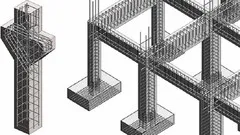Free Online Structural Engineering Courses and Certifications 2024
Structural engineering is a sub-discipline of civil engineering in which structural engineers are trained to design the 'bones and muscles' that create the form and shape of man made structures. Structural engineers need to understand and calculate the stability, strength and rigidity of built structures for buildings and nonbuilding structures.
Popular Courses
















Structural Engineering Courses
What Are the Best Structural Engineering Certifications?
Engineer In Training certification (EIT) by National Council of Examiners for Engineering and Surveying. This is a professional certification that demonstrates your knowledge and skills in the fundamentals of engineering. You will have to pass an online exam that covers topics such as mathematics, engineering sciences, engineering economics, ethics, statics, dynamics, mechanics of materials, fluid mechanics, etc. You will also have to meet the eligibility requirements of having an engineering degree or being enrolled in an engineering program. This certification is suitable for anyone who wants to pursue a career in Structural Engineering or any other engineering discipline.
Structural Engineer (SE) by Structural Engineering certification Board. This is an advanced certification that validates your expertise in Structural Engineering. You will have to pass two online exams that cover topics such as vertical forces, lateral forces, seismic design, wind design, bridge design, building design, etc. You will also have to meet the eligibility requirements of having an EIT certification and four years of professional experience in Structural Engineering. This certification is suitable for experienced structural engineers who want to advance their careers and stand out in the job market.
BIM Application for Engineers by National Taiwan University on Coursera. This is a single course that teaches you how to use Building Information Modeling (BIM) tools and techniques for Structural Engineering projects. You will learn how to create 3D models of structures using Autodesk Revit software, how to perform structural analysis using Autodesk Robot software, how to collaborate with other engineers using BIM 360 software, and how to generate reports and documentation using BIM software. This course is suitable for intermediate learners who have some prior knowledge of Structural Engineering and BIM software.
Mastering Statics by The Hong Kong University of Science and Technology on Coursera. This is a single course that teaches you the principles and applications of statics for Structural Engineering problems. You will learn how to calculate the forces and moments acting on rigid bodies in equilibrium, how to analyze trusses, frames and machines using the method of joints and the method of sections, how to determine the internal forces in beams using the method of sections and the method of integration, and how to calculate the reactions at supports using the method of virtual work. This course is suitable for beginners who want to learn the basics of statics for Structural Engineering.
Frequently Asked Questions and Answers
Q1: What are the different aspects that structural engineering takes into account?
Structural engineering is a subfield of civil engineering that specifically concentrates on the strength, stability, and durability of various structures such as buildings, bridges, airplanes, and more. Professionals in this field utilize their expertise in physics, mathematics, and structural design criteria to collaborate with architects and designers in order to create comprehensive and secure structures.
Q2: What are the uses of structural engineering?
The structural engineer is tasked with the responsibility of economically designing various structures, including buildings, bridges, warehouses, storage tanks, and more. Their primary objective is to ensure that these structures possess adequate strength to withstand external loads and prevent any potential collapse. Additionally, they must also safeguard these structures from extreme natural events such as wind, snow, fire, and earthquakes.
Q3: What are some examples of structures that a structural engineer might work on?
Structural engineers frequently specialize in specific types of structures, including buildings, bridges, pipelines, industrial facilities, tunnels, vehicles, ships, aircraft, and spacecraft.
Q4: What is the process of structural engineering?
Structural engineering is a branch of civil engineering that applies the laws of physics, mathematics, and empirical knowledge to design the "bones" and load-bearing components of man-made structures in a safe manner.
Q5: What Structural Engineering courses can I find on AZ Class?
On this page, we have collected free or certified 152 Structural Engineering online courses from various platforms. The list currently only displays up to 50 items. If you have other needs, please contact us.
Q6: Can I learn Structural Engineering for free?
Yes, If you don’t know Structural Engineering, we recommend that you try free online courses, some of which offer certification (please refer to the latest list on the webpage as the standard). Wish you a good online learning experience!
ADVERTISEMENT
